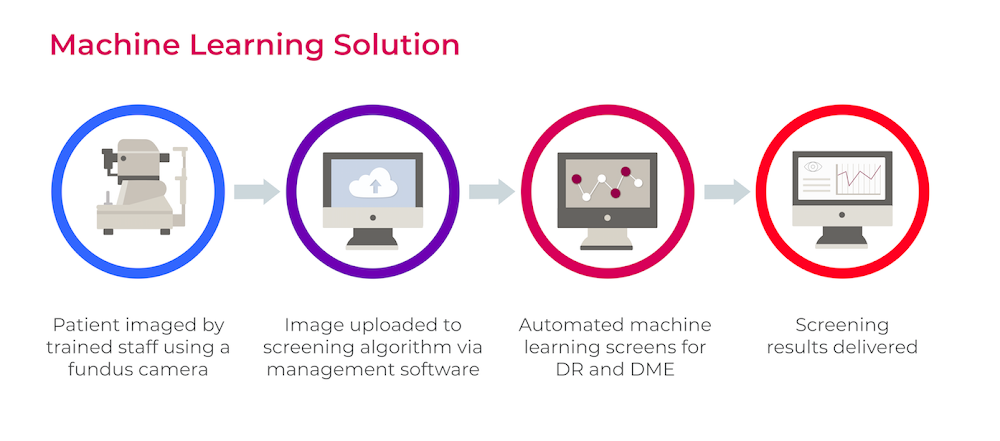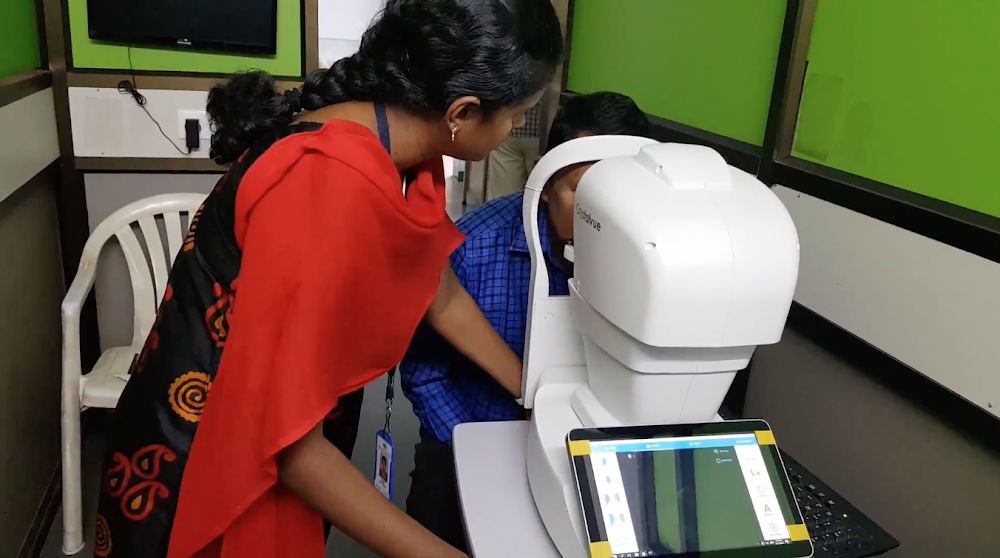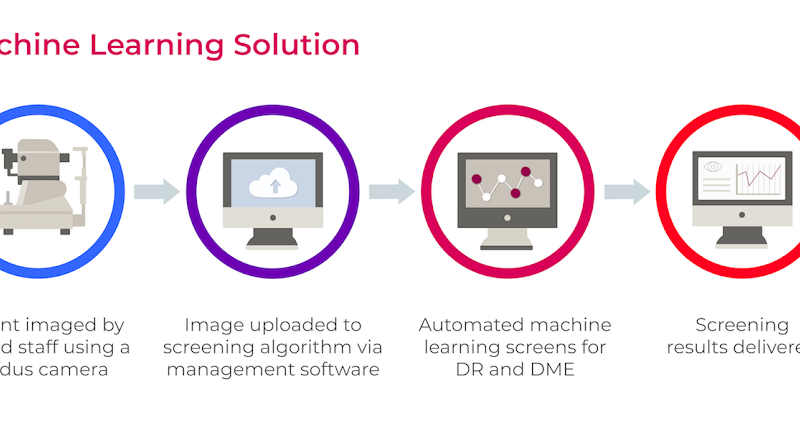Author:
Diabetes is at an all-time high around the world, and the number of people living with the disease is only increasing. Many complications can arise from diabetes, including diabetic retinopathy (DR) and diabetic macular edema (DME)—two of the leading causes of preventable blindness in adults. In India, a shortage of more than 100,000 eye doctors—and the fact that only 6 million out of 72 million people with diabetes are screened for diabetic eye disease—mean that many individuals go undiagnosed and untreated.
Over the last three years, Google and Verily—Alphabet’s life sciences and healthcare arm—have developed a machine learning algorithm to make it easier to screen for disease, as well as expand access to screening for DR and DME. As part of this effort, we’ve conducted a global clinical research program with a focus on India. Today, we’re sharing that the first real world clinical use of the algorithm is underway at the Aravind Eye Hospital in Madurai, India.

How the machine learning screening works at the hospital in Madurai
Thousands of patients come through the doors of Aravind Eye Hospital and vision centers every day. Dr. R. Kim, chief medical officer and chief of retina services, says that by integrating our machine learning algorithm into their screening process, “physicians like me have more time to work closely with patients on treatment and management of their disease, while increasing the volume of screenings we can perform.”

Screening using the algorithm at the Aravind Eye Hospital with a trained technician.
Building off our initial efforts, we believe our machine learning algorithm could be helpful in many other areas of the world where there aren’t enough eye doctors to screen a growing population with diabetes. As part of our broader screening collaboration, our partners at Verily have received CE mark for the algorithm, which means that the software has met the European Union Directive’s standards for medical devices, further validating our approach. In addition, late in 2018 we announced our research efforts in Thailand and this year we’ll expand our research and clinical efforts globally, with the goal of screening more people and preventing disease.
To read more about our research to date, visit JAMA, Ophthalmology and Nature Biomedical Engineering.
